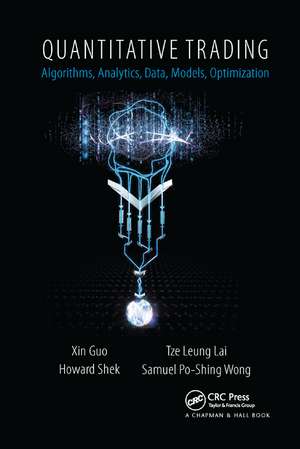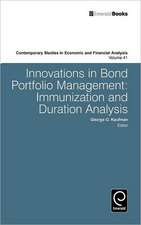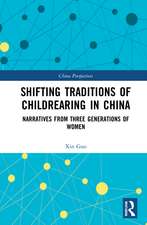Quantitative Trading: Algorithms, Analytics, Data, Models, Optimization
Autor Xin Guo, Tze Leung Lai, Howard Shek, Samuel Po-Shing Wongen Limba Engleză Paperback – 10 dec 2019
| Toate formatele și edițiile | Preț | Express |
|---|---|---|
| Paperback (1) | 352.95 lei 43-57 zile | |
| CRC Press – 10 dec 2019 | 352.95 lei 43-57 zile | |
| Hardback (1) | 733.71 lei 43-57 zile | |
| CRC Press – 15 dec 2016 | 733.71 lei 43-57 zile |
Preț: 352.95 lei
Preț vechi: 454.60 lei
-22% Nou
Puncte Express: 529
Preț estimativ în valută:
67.54€ • 70.70$ • 55.88£
67.54€ • 70.70$ • 55.88£
Carte tipărită la comandă
Livrare economică 07-21 aprilie
Preluare comenzi: 021 569.72.76
Specificații
ISBN-13: 9780367871819
ISBN-10: 0367871815
Pagini: 380
Dimensiuni: 156 x 234 mm
Greutate: 0.45 kg
Ediția:1
Editura: CRC Press
Colecția Chapman and Hall/CRC
ISBN-10: 0367871815
Pagini: 380
Dimensiuni: 156 x 234 mm
Greutate: 0.45 kg
Ediția:1
Editura: CRC Press
Colecția Chapman and Hall/CRC
Cuprins
Introduction
Evolution of trading infrastructure
Quantitative strategies and time-scales
Statistical arbitrage and debates about EMH
Quantitative funds, mutual funds, hedge funds
Data, analytics, models, optimization, algorithms
Interdisciplinary nature of the subject and how the book can be used
Supplements and problems
Statistical Models and Methods for Quantitative Trading
Stylized facts on stock price data
Time series of low-frequency returns
Discrete price changes in high-frequency data
Brownian motion at the Paris Exchange and random walk down Wall Street
MPT as a \walking shoe" down Wall Street
Statistical underpinnings of MPT
Multifactor pricing models
Bayes, shrinkage, and Black-Litterman estimators
Bootstrapping and the resampled frontier
A new approach incorporating parameter uncertainty
Solution of the optimization problem
Computation of the optimal weight vector
Bootstrap estimate of performance and NPEB
From random walks to martingales that match stylized facts
From Gaussian to Paretian random walks
Random walks with optional sampling times
From random walks to ARIMA, GARCH
Neo-MPT involving martingale regression models
Incorporating time series e_ects in NPEB
Optimizing information ratios along e_cient frontier
An empirical study of neo-MPT
Statistical arbitrage and strategies beyond EMH
Technical rules and the statistical background
Time series, momentum, and pairs trading strategies
Contrarian strategies, behavioral _nance, and investors' cognitive biases
From value investing to global macro strategies
In-sample and out-of-sample evaluation
Supplements and problems
Active Por
Notă biografică
Xin Guo is the Coleman Fung Chair Professor of Financial Modeling in the department of Industrial Engineering and Operations Research, UC Berkeley. She founded the Berkeley Risk Analysis and Data Analytics Research (RADAR) Lab and holds a courtesy appointment with the Lawrence Berkeley National Lab. Prior to UC Berkeley, she was a Research Staff Member at the IBM T. J. Watson Research Center and an Associate Professor at Cornell University. Her main research interests are stochastic control, stochastic processes and applications. In addition to high frequency trading modeling and analysis, her recent research includes singular controls, impulse controls, non-linear expectations, mean-field games, and filtration enlargement with application to credit risk.
Tze Leung Lai is a Professor of Statistics and, by courtesy, of Health Research and Policy in the School of Medicine and of the Institute for Computational & Mathematical Engineering (ICME) in the School of Engineering at Stanford University. He is Director of the Financial and Risk Modeling Institute, Co-Director of the Biostatistics Core of the Stanford Cancer Institute, and Co-Director of the Center for Innovative Study Design at the Stanford School of Medicine. He has held regular and visiting faculty appointments at Columbia University, UC Berkeley, and Nankai University, and holds advisory positions with the University of Hong Kong, Peking University, and Tsinghua University.
Howard Shek is a senior researcher at Tower Research Capital, where he has built and led the Core Research team with a mandate that covers the wide spectrum of research topics in automated trading. He has over 15 years of quantitative research and trading experience in fixed-income arbitrage, market microstructure, volatility estimation, option pricing, and portfolio theory, and has held senior trading and research positions at Merrill Lynch and J. P. Morgan, focus
Tze Leung Lai is a Professor of Statistics and, by courtesy, of Health Research and Policy in the School of Medicine and of the Institute for Computational & Mathematical Engineering (ICME) in the School of Engineering at Stanford University. He is Director of the Financial and Risk Modeling Institute, Co-Director of the Biostatistics Core of the Stanford Cancer Institute, and Co-Director of the Center for Innovative Study Design at the Stanford School of Medicine. He has held regular and visiting faculty appointments at Columbia University, UC Berkeley, and Nankai University, and holds advisory positions with the University of Hong Kong, Peking University, and Tsinghua University.
Howard Shek is a senior researcher at Tower Research Capital, where he has built and led the Core Research team with a mandate that covers the wide spectrum of research topics in automated trading. He has over 15 years of quantitative research and trading experience in fixed-income arbitrage, market microstructure, volatility estimation, option pricing, and portfolio theory, and has held senior trading and research positions at Merrill Lynch and J. P. Morgan, focus
Recenzii
"All in all, it is certainly a welcome addition to the nascent literature on this intriguing subject and recommended reading for those interested in quantitative trading strategies—academics, practitioners, and students alike."
~The American Statistician, Mikko S. Pakkanen
~The American Statistician, Mikko S. Pakkanen
Descriere
The first part of this book discusses institutions and mechanisms of algorithmic trading, market microstructure, high-frequency data and stylized facts, time and event aggregation, order book dynamics, trading strategies and algorithms, transaction costs, market impact and execution strategies, risk analysis, and management. The second part cove



























![Contingent Convertibles [Cocos]](https://i4.books-express.ro/bt/9789814619899/contingent-convertibles-cocos.jpg)